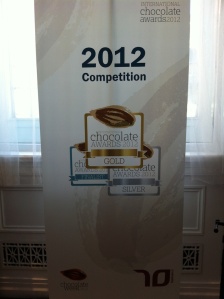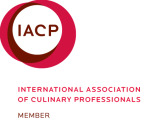Things you turn down: the b ed covers, Elvis’s “Suspicious Eyes” playing at 4 am, the lights down low. Things you don’t turn down: an invitation to join the Grand Jury in judging the Canadian entrants of the International Chocolate Awards.
ed covers, Elvis’s “Suspicious Eyes” playing at 4 am, the lights down low. Things you don’t turn down: an invitation to join the Grand Jury in judging the Canadian entrants of the International Chocolate Awards.
…And that’s how I found myself spending three days surrounded by chocolate and polenta (I’ll explain, I promise), in the company of some of the world’s experts in chocolate: SeventyPercent’s Martin Christy, Italian chocolate expert Monica Meschini and Pam Williams, founder of Ecole Chocolat (and fellow Vancouverite). Our job: to whittle down the 80-plus entries to the best in Canada.
In short, the International Chocolate Awards is a multi-city event to find the best chocolate in the world. Regional events are held in Italy, Europe, the United States and Canada. The winners and finalists from each regional round advance to the world event, where the world’s best chocolate will be decided.
It’s a tall order, and while I won’t deny the surrealness of the task (wait, you want me to taste how much chocolate?!?!), it was also a serious responsibility. These are prestigious awards, with the potential to change people’s careers. This was not something to be taken lightly.
The selection round
In any form of tasting, whether chocolate, wine or cheeseburgers, palate fatigue is a serious concern. To ensure that all entrants are given as fair a chance as possible, the competition begins with a selection round to narrow down the submissions to the ones that have a reasonable chance of winning an award.
During the selection round, we sampled every single submission–all 80-plus of them–and voted to accept or reject each one. All four judges’ scores were tallied, and about half of the submissions proceeded to the formal judging process.
the judging round
The remaining submissions were divided into three separate rounds of judging, with approximately 15 samples per round. Each round of judges included the Grand Jury, plus guest judges with a variety of backgrounds: chefs, pastry chefs and media.
Each round of judging began with a palate calibration, where we tasted three different samples. For new judges or chocolate newbies, this was an opportunity to warm up the taste buds; for seasoned judges, it served as a palate check to see how our perception changed throughout the day. After every five or six samples, we would check our palates against one of the initial samples, noting any changes in the perceived flavour. Over the course of the day, my palate definitely changed, especially after tasting the sweeter entries of the milk chocolate and caramel categories.
In addition, after every sample, we cleansed our palate with soupy polenta. I’ve read plenty of books and experimented with palate cleansers, but this was the first I’d heard of polenta. This wasn’t buttery, salty, rich polenta (maybe seared to get a crisp edge, dusted with salt and pepper and draped with sweetbreads?) Nope. This was plain, unseasoned, slightly gritty polenta. It worked surprisingly well, getting into the corners of our mouths and cleaning out any residual chocolate from the previous sample. However, having eaten polenta by the spoonful for 30 hours over 3 days, it’s safe to say that I won’t be ordering it the next time I’m out.
Each submission is judged on a series of criteria that separates execution, recipe formulation, presentation and flavour. While bars are evaluated differently from confections, the overall idea is the same. For example, one submission might look beautiful and be perfectly executed, but it might not taste very good or use high-quality chocolate. Similarly, something might taste amazing but have technical flaws.
I’ve judged several competitions, both in the chocolate and cookbook worlds, and one of the main criticisms is often that entrants don’t know how they’ll be evaluated. To address this, the International Chocolate Awards have an in-depth explanation of how submissions are judged, as well as copies of the evaluation forms.
the final review
On the third day, after all the results were tallied, the Grand Jury members looked at the finalists. At this point, and only at this point, are the actual entrants revealed. This is a final quality control step–for example, at one of the other competitions, a chocolate shop submitted a bar made from chocolate that they buy and remelt. The chocolate was from a very reputable source and scored highly in the competition, but the entry was disqualified when the Grand Jury realized that the submitter didn’t actually make the chocolate. (In principle, cases like this should be disqualified before they even make it to the judging round, but depending on the number of entries in a region, a few things might slip through the cracks.)
After the Grand Jury reviews the overall judging results, each judge submits their votes for whether the entries should receive a gold or silver medal, or a nomination to the world final. We looked at things like the quality of chocolate used, the technique and execution, and of course, flavour. We also consider things like finesse and refinement; in some cases, items scored highly because they were “yummy” but when placed against more nuanced products, were pedestrian and uninspired (and in several cases, used low-quality chocolate).
the results
The Canadian results were posted yesterday, along with the American results (which include the coveted bean-to-bar categories). Check them out, along with the international results:
- Canadian winners of the International Chocolate Awards
- American winners of the International Chocolate Awards
- Italian winners of the International Chocolate Awards
- European winners of the International Chocolate Awards
Congratulations to all the winners, and best of luck on the world stage!



